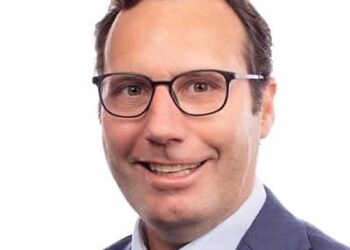JAMES CARVILLE, political adviser to former US President Bill Clinton, famously stated back in
1993 that if he was going to be reincarnated he would want to come back as the bond market – because “you can intimidate everyone”.
He was talking about the power of the bond price to dictate government policy. However, embedded within his statement is the personal connection that the asset class has with the economy.
“The expectation of growth and inflation is how these things are driven, and it is all about whether or not you see growth and inflation in the medium term to long term,” Nicholas Yaxley, credit analyst at Morningstar tells ifa.
“These are the primary things that people should be concerned about, and understanding that the yields on bonds do not go down forever and the capital prices in turn will not go up forever.”
The veteran analyst believes that at the top end of the adviser market people are aware of this maturity risk, but he is unsure whether, at the bottom end, financial planners are actually fully abreast of the risks of holding bonds with different durations.
The importance of this is reiterated by Stephen Howard, who heads Vanguard’s fixed interest department.
“When clients are looking at making choices on defensive assets, they should really look at the time horizon of their investment, the stages of life, also the risk profile,” he says. “The key thing is understanding why you are going into defensive assets and how that fits your investment objectives and your investment time horizons.”
This need is particularly acute in the current economic climate. In the United States, the Fed is planning to taper off quantitative easing (QE) and possibly raise rates at some point. Bond prices are inversely related to interest rates, so this would have a dramatic effect on the capital of bonds prior to maturity.
“There is a lot that has been said by the Federal Reserve, and even if you are really on top of it, it is very difficult to understand,” Jason Blumberg, a senior investment analyst at van Eyk Research, says.
He points out that predicting interest rate risk is difficult, even for experts.
“In terms of where rates are going to go in the near term, even some of the best managers are very unsure of what is going to happen,” he says.
If rates do rise in the medium to long term, this could erode the capital on a bond, particularly if the bond is not inflation-indexed.
“If you hold a bond to maturity you could have lost a lot of purchasing power along the way,” Mr Blumberg says, cautioning advisers opting for higher yields with longer durations, as they could be “opening yourself to a lot of additional risk”.
Diversification, not just returns
Fixed income is often assumed to be a conservative capital protecting asset. However, perhaps more important is its ability to act as a counter balance to other assets held in a client’s portfolio.
“I think the whole 2008 period, with the Lehman default and the global financial crisis … has really focused people’s attention more and more on the diversification benefits that fixed income offers,” says Mr Howard.
While seeing considerable adviser curiosity around using this asset’s diversification attributes, he cautions investors who assume bonds can merely be used as a substitute for term deposits or cash in the conservative part of a portfolio.
Bonds, Mr Howard emphasises, have very different characteristics.
It is also important to try to maximise the diversification benefit within this asset class, particularly for those who want capital protection in retirement.
“If you considered yourself diversified across a bunch of term deposits, hybrid securities, maybe a few senior fixed interest [assets] exposed to equities, you are not as diversified as you think,” Mr Blumberg explains.
For example, a client who is exposed to a major bank default will see capital losses not just across their equity portfolio; their losses would also spread to their fixed income and even, potentially, to their term deposits.
In contrast with other developed markets, Australia is yet to fully embrace the diversification benefits of fixed income.
“Certainly, by global standards, Australian weighting of fixed income is quite low, so by definition they are more exposed to equities and that potentially adds volatility to their portfolio,” says Warren Tease, head of interest rate strategies for UBS Global Asset Management.
“It is possible that the Australian community as a whole has a more volatile underlying asset allocation strategy than their counterparts around the world.”
This has dangers, as more and more baby boomers expect to draw on their pension as an income and will not be able to deal with short- to medium-term volatility.
The government is aware of this since it “had so many advisers tell them in general that the pension market is hugely overweight in equities,” adds Mr Yaxley.
However, as the director of education and fixed income research at FIIG Securities, Elizabeth Moran, points out, the current Australian tax regime favours equity ownership.
“Franking credits are one of those things that promote a higher risk asset class,” Ms Moran says. “We have a lot of that money accumulating in superannuation and a lot of that is in high risk assets.”
Despite an Aussie bias toward equities, there are still signs that some within the advisory community are using the benefits of fixed income. Andrew Zbik, a senior financial planner at Omniwealth, believes that for them, the asset class is a “space that is growing” and matches many of their clients’ needs.
He admits, however, that the asset allocations strategies of advisers need some improvement if they are to fully exploit the attributes of fixed income.
“Most of the industry still has a very static [approach] – regardless of what is going on in the environment they still stick to this same asset allocation to clients,” he says.
So many options
Fixed income does not have the dazzling capital growth that equities have and often is assumed by advisers to be the ‘uninteresting’ asset class.
“Most of my new clients, they have never had that conversation around fixed income securities with an adviser before … For most advisers, it is the vanilla, boring asset class that excites no-one,” Mr Zbik admits.
Indeed, the ‘vanilla’ assumptions about the asset class often lead to a conflation with other more bland assets, something which is not really accurate.
“Advisers often compare the running yield on a bond fund with the return on a cash fund or the return on a term deposit, and make decisions [about whether] they should invest in one or other, but to some extent they are comparing apples with oranges.By doing that they don’t place enough weight on the diversification characteristic that a conservative bond fund puts into portfolios,” says Mr Tease.
Within fixed income there is a whole host of options to meet clients’ risk appetites, but as Mr Blumberg explains, many of these assets aren’t used by advisers.
“In between term deposits, which we classified as cash, and hybrids, which we classified as typically co-ordinated debt, there are a lot of other credit securities that personally I do not feel really get the attention that is deserved of them,” he says.
However, there are difficulties in gaining exposure, as the fixed income options available to the average retail investor have been limited in Australia.
“Historically, advisers [and] the retail market have been pushed into term deposits and equities. The development of the market at the moment is slowly opening the retail market to new asset allocation opportunities,” Mr Yaxley says.
While he believes such developments are good for the market, with these new opportunities he also believes advisers need to educate themselves about how they operate.
Not all about yield
The search for yield has also affected fixed income allocations, with advisers pushing down to lower credit quality securities.
“What I am finding is that people who want to push up from the equities spectrum to something a little bit safer generally go into hybrids,” Mr Blumberg says.
However, the research analyst, who has seen some of these high yielding assets “massively oversubscribe”, points out that they bring danger with them.
“You are on the same risk spectrum as equity, but not on the same returns spectrum. So if equity does very well, you are not necessarily going to participate more than your promised coupon return,” he says.
So, while these assets do offer less volatility than equities, in taking them on, investors may also be taking on risks they do not fully understand.
“Definitely, they are taking on more risk than they are assuming … They very much need to look at what is the worst case scenario and can their investors afford to lose money,” Ms Moran says.
Understanding this ‘down-size risk’ can be particularly difficult since the structure of this asset is generally shrouded in technical jargon.
“You might have legal documentation that could be a hundred pages long, that defines all the rights and obligations you have on the risk profile on the down-size,” Mr Howard says, but also points out that while the asset class can have a role as part of a diversified portfolio, advisers need to be extremely careful if they do not fully understand them.
Also, these securities arguably only fit a very specific type of client, and should not really be used for those who are looking for income and capital protection in retirement.
“Investing directly in credit security, particularly hybrids, where your goal is to protect capital and gain a percentage income on that capital … direct securities is not the most efficient way,” Mr Blumberg says.
Dangers of going direct
Many advisers are being more active in their client’s fixed income portfolio, bypassing managed funds or approved product lists, and purchasing listed or unlisted bonds direct.
“Definitely for our larger clients [$2 million-plus], we are just going direct with a number of different holdings, using a combination of some hybrids, some of the subordinated notes, and even … we are getting access to some of the unlisted bonds that are providing you a good yield and a good running yield to maturity,” says Mr Zbik.
There is, according to Mr Zbik, a strong “appetite” among clients to go direct. This, he points out, can reduce costs and increase transparency.
Vanguard, however, which has fixed income funds, sees risks in doing this: “The last thing you want to be is in a position [where] if you do need to get that money [out] for some personal need and you are not diversified … For two million [dollars] you would get into problems around diversification and [in particular] liquidity,” Mr Howard argues.
Ultimately, says Vanguard’s head of the fixed income division, it is up to the client. “It is [more] about making sure the client is completely aware of the risk that direct investing brings to them and then understanding you are not getting the diversification benefits – and, potentially, you could get the liquidity problems as well,” Mr Howard says.
Even with a structured fixed income fund, it is not easy to assess what is suitable for clients.
According to Mr Tease, “[Advisers] look at the comparison on a relative basis of how different managers are performing. One thing I would emphasise is that because fixed income is a very diverse asset class, different managers within the same peer group could manage their fixed income risks in quite different ways.
“In some market circumstances,” he adds, “it may suit the style of one particular manager and they will do well, and in other circumstances they might not do well.”
Mr Tease believes one way round this is for advisers not just to focus on “the short-term volatility in the numbers” but rather to look at how managers have performed in the long run over “many investment cycles”.
Not an easy job
Once an adviser understands how this asset operates and the options that are available in the fixed income market, then it can play a key role in meeting their client’s needs.
“Fixed income is a very diverse asset class and because of that, different types of strategies or funds have very different risk and return characteristics,” says Mr Tease. “It is important for advisers to understand the differences in the risk-return characteristics of different fixed income asset classes, and map them into their clients’ preferences.”
However, understanding fixed income’s different characteristics is something even asset managers themselves admit is a difficult task.
“People look at fixed income as a relatively boring asset class and they don’t understand that a lot of work goes on under the hood that they don’t see,” he says.
However, an in-depth knowledge of this boring asset will only increase the arsenal of options that advisers can present to their clients.
“It is hard to speak confidently if you are not so confident regarding an asset class yourself,” says Ms Moran. «



